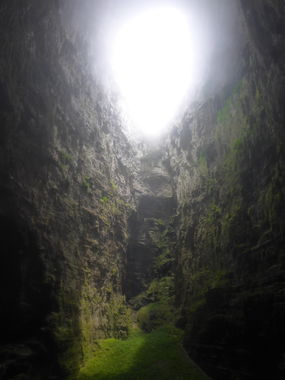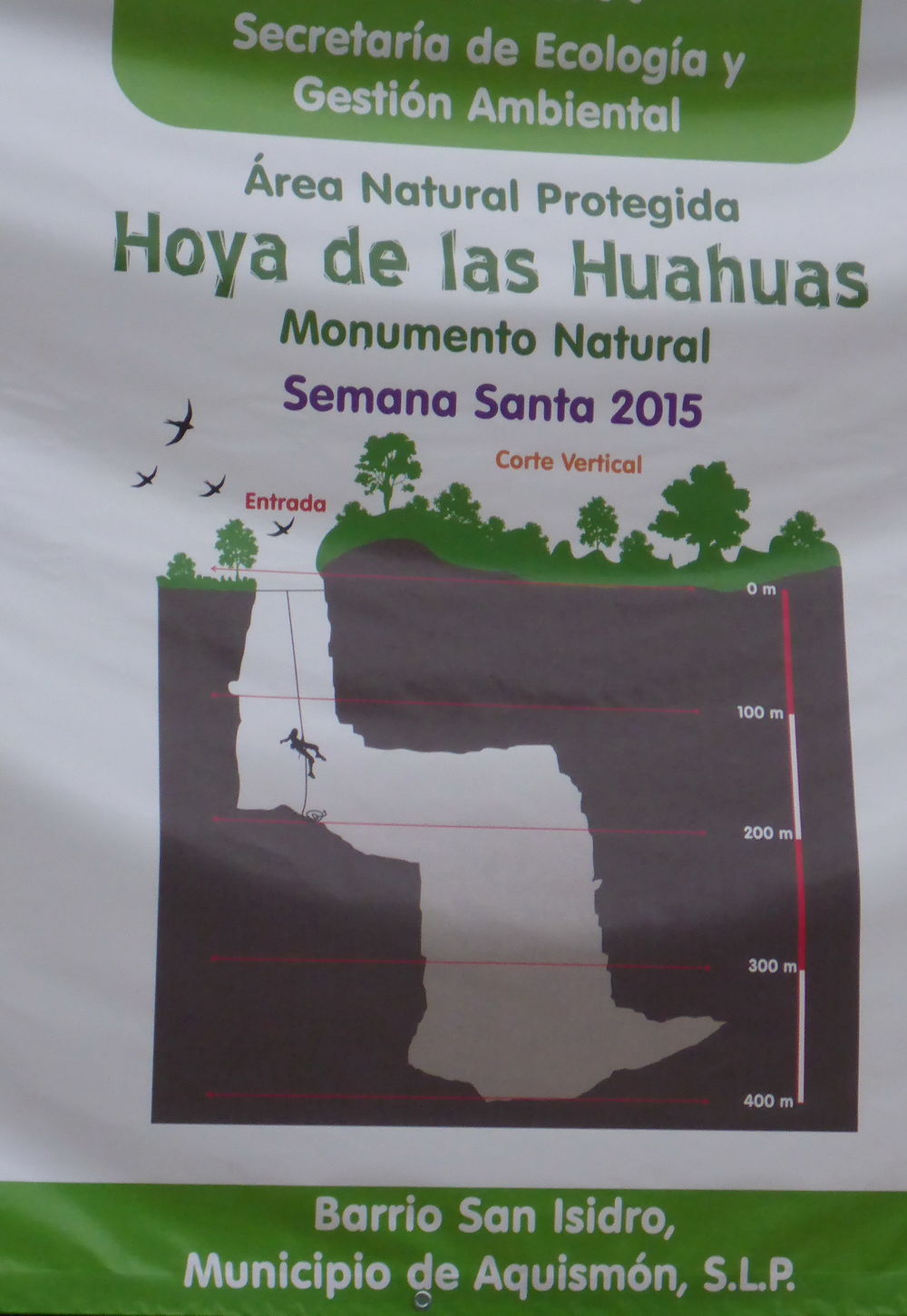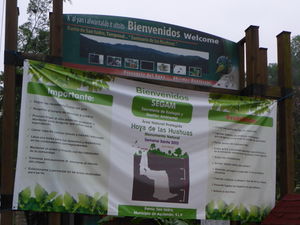Hoya de las Guaguas
| Rating: | |||||||||||||||||||||||||||||||
|---|---|---|---|---|---|---|---|---|---|---|---|---|---|---|---|---|---|---|---|---|---|---|---|---|---|---|---|---|---|---|---|
| | Difficulty:Pit 4A II (v4a1 II) Raps:2, max ↨457ft
Red Tape: Shuttle: Vehicle:Passenger | ||||||||||||||||||||||||||||||
| Location: | |||||||||||||||||||||||||||||||
| Condition Reports: | 22 Nov 2024
"I visited alone this time so did not rappel, although in 2015 I rapped to the bottom on a trip with Luca. Still an amazing place to visit even if not |
||||||||||||||||||||||||||||||
| Best season: | Nov-Mar (avg for this region)
|
||||||||||||||||||||||||||||||
| Regions: | |||||||||||||||||||||||||||||||
Introduction[edit]
This is one of the 'classic' pits in the region. Like Golondrinas, it hosts a large population of birds that exit the cave in the morning and come back in the afternoon. In this case they are called Huahuas or Guaguas, which is a type of Green Parrot.
In 2015 the entrance fee was $35 Pesos per person and $150 Pesos more to rappel the drop. A porter to carry the rope can be hired for $200-$300 pesos. The family that manages the access to the cave also offers homemade meals if you request it before you drop the pit. Entrance Kiosk (Tienda Diconsa) Tel: +52 6148 2596 0806
There is a considerable population of bees that nest in the walls of the cave, with large nests visible in the high wall side of the pit. Cavers have reportedly been stung on warm sunny days, when the bees are most active. We read reports that claimed they are africanized bees (Killer Bees), but the ones we saw buzzing around us while climbing out looked too small. When asking local guides, all guarantee they are just normal honey bees. That means they may sting if you piss them off, but you will not get 1000 stings in 5 minutes like you would with real Killer Bees. In any case, it is best to drop the pit in colder or rainy days in order to avoid running any risks.
The upper room of the cave is (simplistically) shaped like a shoe, with a longer (~750 ft) free drop from the "tongue" of the shoe and a shorter (~500 ft) drop close to the pit wall of the "heel" of the shoe. The high side drop is free (no walls within ~150 ft) below the first 30 ft or so. With two ropes, a larger group can cycle through the upper room by rappelling the high side and climbing the short side.
Approach[edit]
From the entrance kiosk a stone trail traverses plantations and forests for 20-30 minutes and takes you directly to the top of the pit.
Descent[edit]
The cave is 466m deep and ends in a sump. It is best to rappel from the low side of the pit, where there are less bees. The cave is rappeled in two stages, although very few people drop the second stage.
- R1: 139m from large rock on the left of the viewpoint. Bolt stations also abound here, but you will need to bring your own hangers if you want to use them
- R2: 149m from rocky outcrop at the end of the sloped floor and the mouth of the second drop. This second rappel is sloped and has a high risk of rock fall.
Exit[edit]
Ascending back up the rope is best done in full silence and efficiently, in order to avoid attracting bees.
Red tape[edit]
It is rumored that access to rappel the pit may be restricted in order to protect the birds. In 2015 this was not the case, but it may be just a matter of time.
There are a number of other limitations posted at the entrance kiosk:
Beta sites[edit]
- http://viajerosustentable.com/2011/06/19/santuario-de-las-huahuas/
- http://www.amcs-pubs.org/maps/0112.pdf Cave Map
- http://www.amcs-pubs.org/maps/3107.pdf Cave Map
Trip reports and media[edit]
One good drone shot of the pit and a rappeller on rope from the high side anchor: https://vimeo.com/151447666 (credit to Robert Lannon/RPL Building Services).


